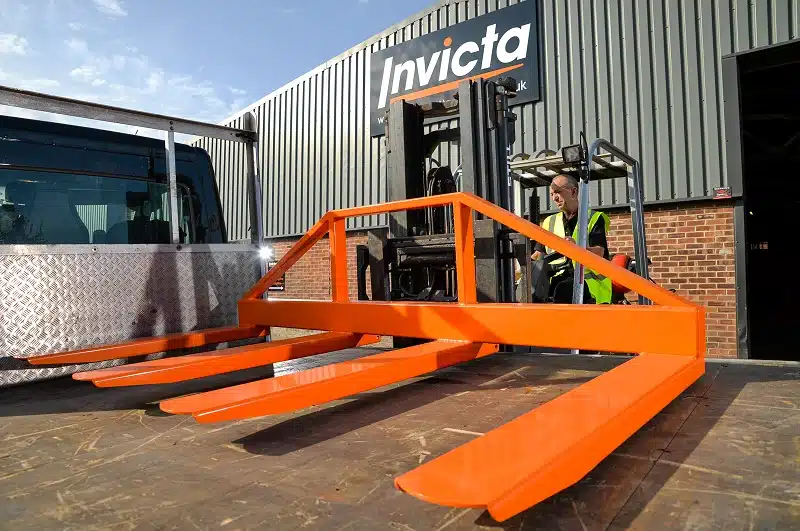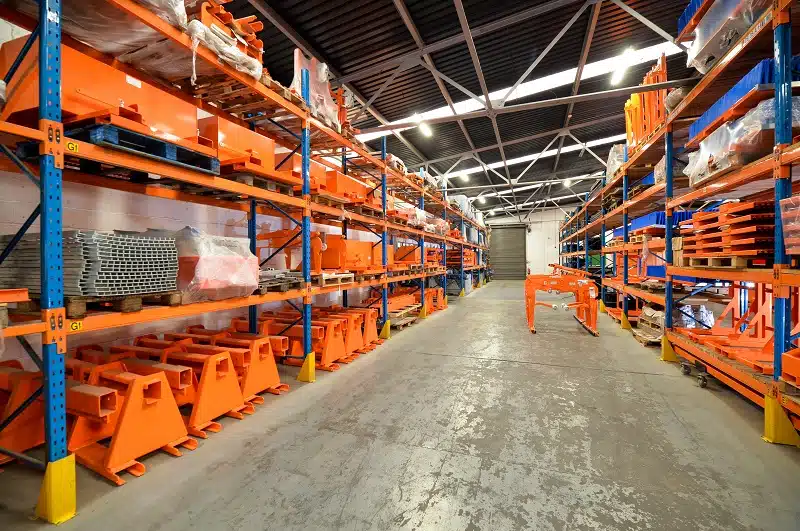Manual vs mechanical handling: a comparison guide
 When it comes to moving materials on site, there’s more than one way to do it – but not all methods are created equal. Manual handling is still used in lots of workplaces, but mechanical handling often offers a safer, more efficient way to get the job done.
When it comes to moving materials on site, there’s more than one way to do it – but not all methods are created equal. Manual handling is still used in lots of workplaces, but mechanical handling often offers a safer, more efficient way to get the job done.
This guide provides a practical material handling comparison to help you choose the right approach for your site. We’ve broken down the key differences, weighed up the pros and cons and explained how the right equipment can take the strain off your team.
What is manual handling?

Manual handling means moving things by hand. That could be lifting a box, carrying stock, pulling a trolley or pushing something across a warehouse floor. It’s any job where someone’s using their own strength to shift a load.
These tasks are often straightforward, but they come with risks – especially if done repeatedly, in awkward spaces or without proper support.
What is mechanical handling?
Mechanical handling is where machines do the heavy lifting. This includes forklifts, pallet trucks, hoists, cranes and all the attachments that come with them – from tipping skips to drum handlers. All of this falls under the category of mechanical handling equipment – designed to do the job properly without physical strain.
Instead of relying on physical effort, you’re using kit that’s built to move loads safely, quickly and with less wear and tear on the team.
Key differences: manual vs mechanical handling
| Aspect | Manual handling | Mechanical handling |
|---|---|---|
| How it works | Done by people using physical effort | Uses equipment like forklifts and attachments |
| Safety | More chance of strain or injury | Reduces physical strain with proper use |
| Speed | Slower and more labour-heavy | Faster and more consistent |
| Costs | Low upfront, but long-term injury costs add up | Higher initial spend, but more efficient over time |
| Scale | Limited by what a person can carry or lift | Ideal for large or frequent loads |
Safety considerations and manual handling risks
Understanding manual handling risks is key to reducing injuries on site. Manual handling is one of the most common reasons people get hurt at work. According to the HSE, over a third of all work-related muscle and joint issues come from jobs involving lifting or moving things by hand.
That includes:
- Back problems from heavy lifting
- Aches and strains from awkward movements
- Repetitive injuries from doing the same task again and again
Mechanical handling cuts down on physical effort, but the equipment still needs to be used properly. That means:
- Keeping kit well-maintained
- Training people to use it safely
- Choosing the right attachment for the job
Cost comparison

Manual handling might seem like the cheaper option – no machinery, no attachments, no operator training. But those savings can be short-term.
Injuries, sick days, and slower workflows cost money. A small change like switching to a new attachment can improve safety and material handling efficiency across your site. Over time, mechanical handling is often more cost-effective because it helps reduce downtime, protect your team and get work done faster.
When to use manual handling
Sometimes, using hands-on methods makes sense:
- For light, one-off jobs
- In small spaces where machines won’t fit
- When the load isn’t too heavy or awkward
Even then, it’s important to support staff with the right tools – whether that’s a basic trolley, a set of wheels or just enough people to share the load.
When to use mechanical handling

There are several mechanical handling benefits, especially when you’re dealing with heavy loads or tight deadlines. Mechanical handling is the better option when:
- You’re lifting regularly or dealing with heavy loads
- You’ve got tight deadlines or a high-volume job
- You want to reduce the risk of someone getting hurt
It’s one of the best ways of reducing manual handling in warehouses and keeping operations running smoothly anywhere that needs to move materials efficiently and safely.
Forklift attachments for safe handling
Using the right forklift attachments for safe handling can help reduce the strain on your team. Some of the most useful include:
- Tipping skips – make waste disposal faster and safer
- Fork extensions – give extra reach for longer loads
- Drum handlers – move barrels without awkward lifting
- Fork or carriage mounted jibs – lift items up and over obstacles
How to make the switch
Thinking about shifting to mechanical handling? Here are a few things to keep in mind:
- Look at where people are still lifting by hand
- Check if there’s a machine or attachment that could help
- Make sure operators are trained and confident
- Keep up with regular checks and maintenance
- Match attachments to the job and the forklift you’re using
Staying compliant

Employers must follow all relevant manual handling regulations UK law sets out, including proper training and risk assessment. There are two key sets of UK regulations to be aware of:
- The Manual Handling Operations Regulations 1992 – says you should avoid manual handling where you can, and reduce the risk where you can’t
- LOLER 1998 – covers lifting equipment, and says anything you use (including attachments) must be properly inspected and safe to use
All lifting equipment and attachments must meet LOLER compliance mechanical handling standards, with regular inspections in place. Good handling isn’t just about kit. It’s doing things properly, keeping people safe and staying compliant.
Find out more about our LOLER Thorough Examination service
Making the right choice for your site
There’s no one-size-fits-all fix, but understanding the options puts you in a better place to decide. Whether it’s a quick change or a bigger shift in how you work, the right setup helps things run smoother and takes the pressure off your team.
At Invicta, we build attachments that are made to last, fit for purpose and ready to go. If you’re not sure which one’s right for your setup, we’re happy to help. Get in touch to talk through your options with our friendly team.
Back to all blog posts
